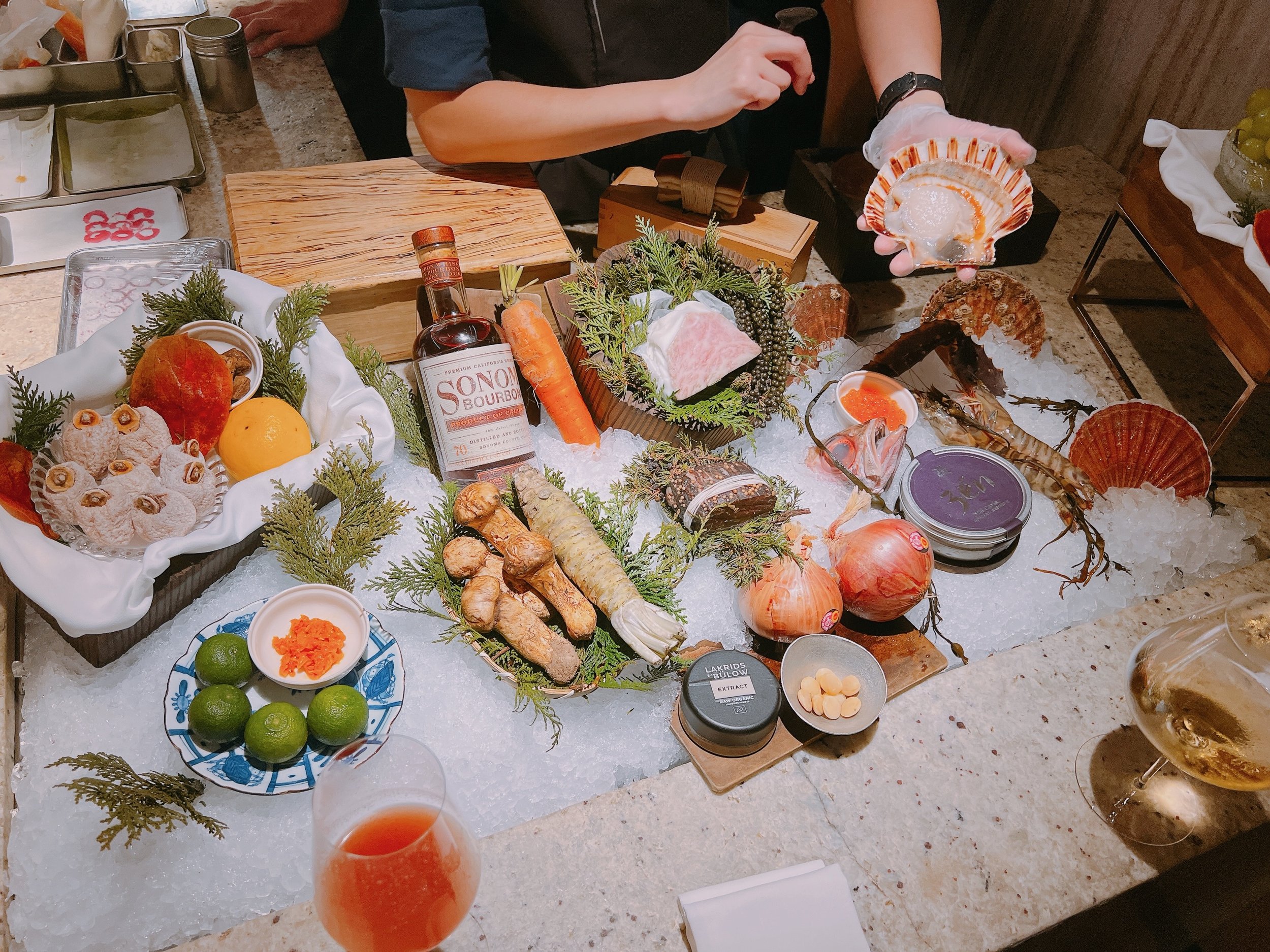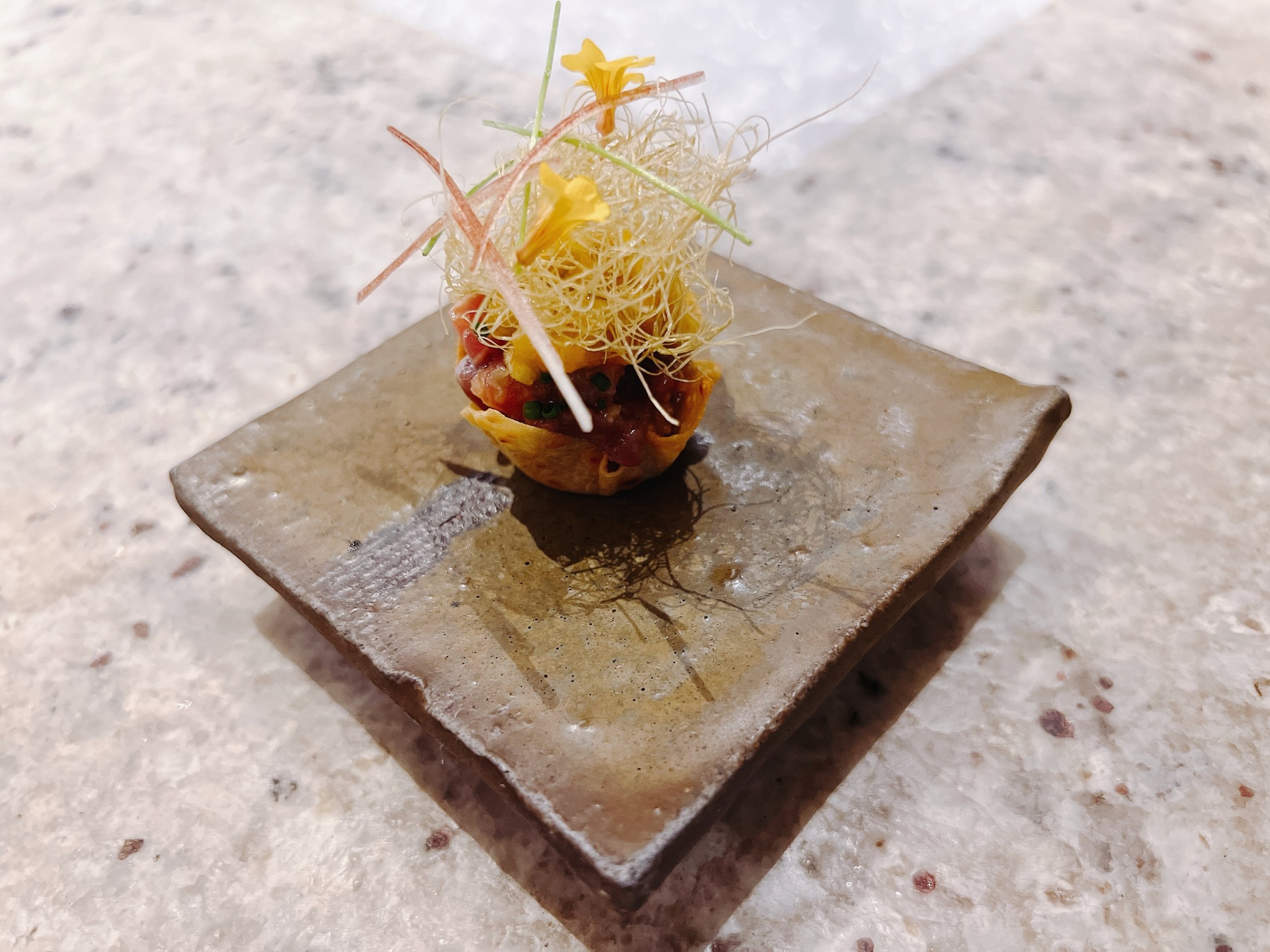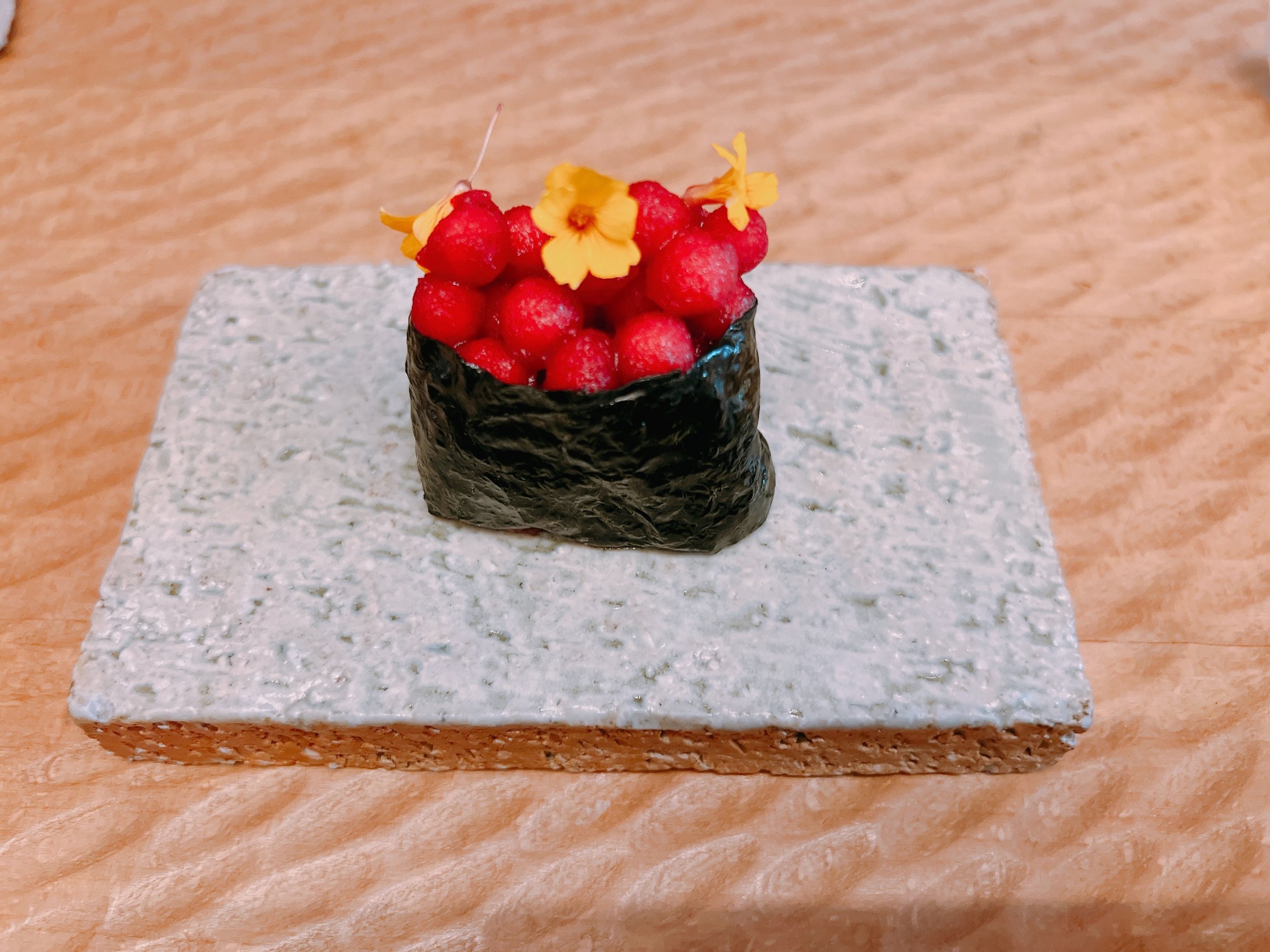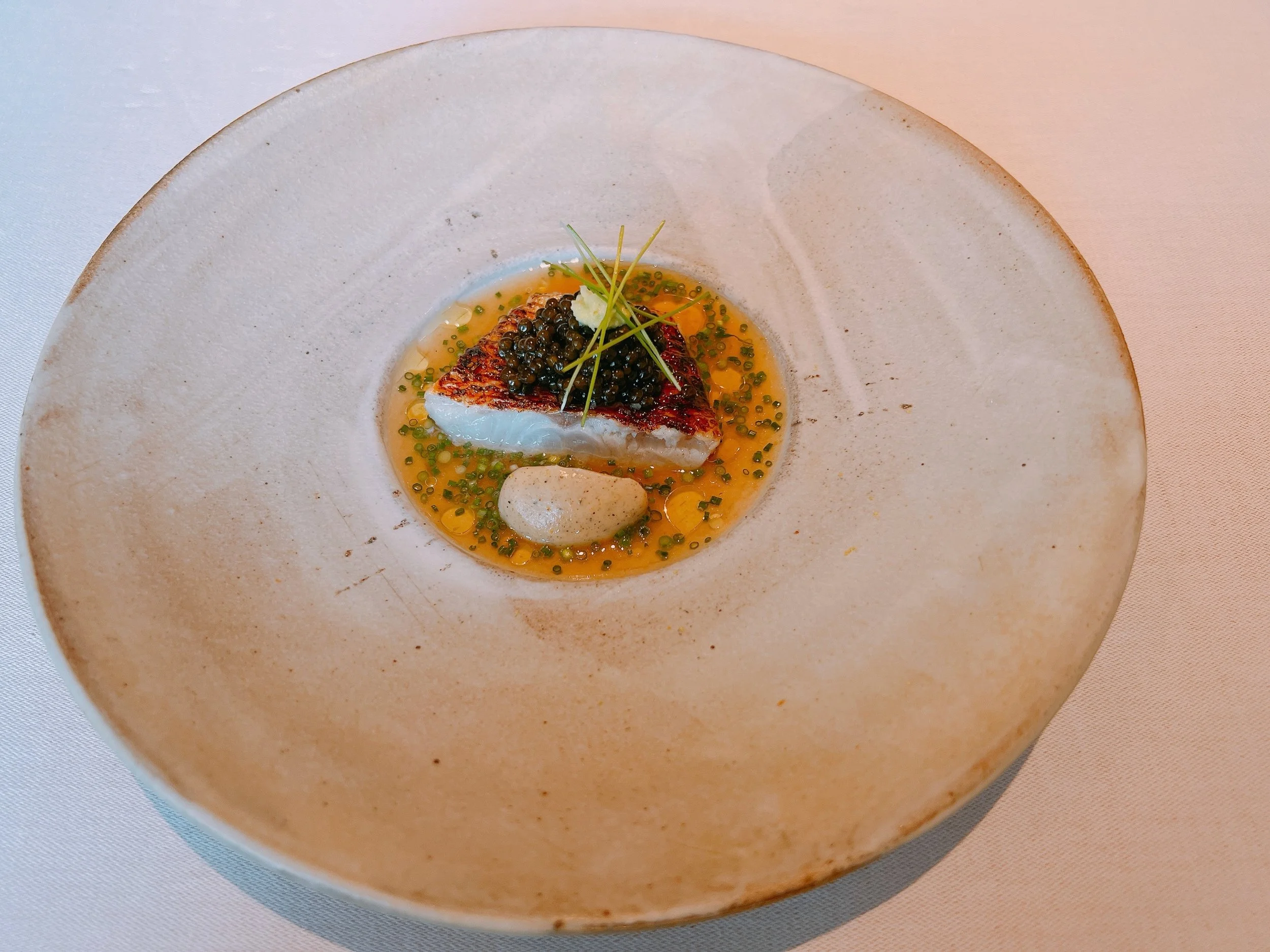Zén - Singapore
Rating: 18/20
Where: Singapore
When: Lunch for 3 on 11 November 2022
Cost per Person: Tasting menu 580 SGD, Wine Pairing 350 SGD
Accolades: 3 Michelin Stars, #70 on Top 50 Restaurants list (2022)
Why: Creative Scandinavian cuisine with Japanese influences, novel and delicious; relaxed service
Zén is a three-Michelin-starred restaurant located near Singapore's Chinatown. Opened in 2018, the restaurant is an offshoot of Frantzén, Sweden's first restaurant to receive three Michelin stars. I thought that Frantzén was terrific during a visit about half a year earlier, and was curious to see how the experience translated to a different setting.
Arriving at Zén's address, one might be tempted to double-check that this is indeed the right place. A nondescript white colonial townhouse, no apparent signs, small windows and a closed door - not exactly where you’d expect to find a restaurant, let alone one with three Michelin stars. Then again, the restaurant doesn't exactly cater to walk-ins, and a closer inspection revealed the restaurant's name on a small golden plaque above the doorbell.
After ringing said doorbell, we were led to a lounge on the ground floor of the building, where the meal soon commenced. The open kitchen was located towards the rear of this floor, but due to our low seats, we could only catch glimpses of it.
Food choices were simple: there weren't any. Zén served just one fixed tasting menu to everyone. There were more options regarding beverages, and there were three drink pairings: one alcoholic, one non-alcoholic, and the third a mix of the two. I went for the alcoholic pairing, which consisted mostly of wine, but also included a beer, some sake and a Korean fermented rice drink. Overall, this was a pretty good pairing. Not so much because the drinks were exceptional by themselves - they were good, but not amazing. However, they went very well with the paired food. This was also reflected in the detailed descriptions given by our servers for every glass: not just the backstory of its production, but also a discussion of what aspects (plural) of the drink matched to which flavors in the dish. This explanation was done at a level of specificity rarely seen, and most welcome.
But back to the food. Small bites appeared right after our arrival, while we were still weighing our aperitif options. A choux pastry was filled with a cheese custard (of Comte, Brillat-Savarin and others) and dusted with leek powder. The insides of this pastry tasted pretty much like cheese fondue, all the way to a (possibly imaginary) hint of kirsch. Very nice 18.
Next came the dish corresponding to the most cryptic line on the menu: "Råraka Kalix Löjrom". If you speak Swedish, this is less mysterious and translates to "potato pancakes with roe". Zén's take on the classic dish was a tube of crispy potatoes filled with crème fraîche. The tube's ends were covered with fish roe, and pickled shallots had been arranged on top of it. Perfectly crunchy potatoes, just the right amount of creaminess from the crème fraîche, and a hint of fishiness from the roe - I only wish the shallots had contributed more than just a smidgen of acidity. Eaten in two bites, the tube broke cleanly in half without any messiness: a perfect consistency 19.
For the next two appetizers we were asked to stand at a counter bordering the kitchen. On top of the counter was a display of all the ingredients that were used in our meal, just like Frantzén’s presentation.
A blini topped with cucumber, jalapeno and sliced shima aji was a single bite of freshness 18. Also excellent was a tartlet filled with deer tartare and Meyer lemon, but I couldn't detect any of the horseradish that the menu had promised. This dish was wonderfully light, and - thanks to the slight sweetness of the Meyer lemon - surprisingly and refreshingly different. The venison could easily have been mistaken for tuna, no hints of gaminess or heaviness 19.
Back at our table, we were served a "sushi" roll. It looked like a roll of salmon roe over rice, but actually only shared the nori wrapper with that dish. Instead of rice, there was a brioche topped with foie gras. And instead of salmon roe, we found apple pearls soaked in black currant juice. There was just a hint of salmon roe taste (maybe also imaginary), but mostly this was considerably sweeter than the classic nigiri 18.
After these introductory nibbles, we took one flight of stairs up to the main dining room. Tables for twos and fours were stretched out along the long but narrow room. The music selection changed from the 70s to the 80s and unfortunately also became a bit too loud for normal conversations.
The first "real" course of our tasting menu was a smoked scallop crudo. Paired with a British beer, it was served with a truffle dashi, matsutake mushrooms and white truffles shaved on top. Like most of the following dishes, this one was plated right at the table, and slowly constructed from the bottom up. Overall, this dish was pleasant, but very light in flavor - it could have used some more oomph. Something was missing, possibly salt 15.
A chawanmushi contained poached and brined king crab, ikura, dill, sancho vinegar and sancho pepper. The dill made this dish taste very Scandinavian, but the lovely crab and egg custard were all Japanese. They all went together wonderfully 19.
Ebi was still cooking on a charcoal grill when it arrived at the table. It was then cut and served with a beurre blanc sauce containing sea buckthorn and sudachi. The sauce was creamy, acidic, salty, and had plenty of butter - excellent! It would have rated a 20 by itself. The nicely smoked ebi was decent, but became much better when lots of the lovely sauce was added. Both chopsticks and a spoon were provided, but the sauce to ebi ratio (and therefore the enjoyment) was higher with the spoon 18.
Next came a classic dish of Frantzén. It contained onions, marcona almond pieces, almond milk and its foam, almond oil, licorice cream and licorice powder. A lovely combination that's somehow greater than the sum of its parts - everything works together seamlessly. The onion was very hard to detect, and I'm not a great fan of licorice in general, but that's nitpicking a great dish 18.
Akamatsu, a very fatty fish, was served with cauliflower and kombu puree, a pork dashi, copious amounts of caviar, freshly grated wasabi, princess chives, and a green lemon zest. The caviar was excellent both by itself and with the rest of the dish, the fish so fatty and tender than it melted in one's mouth, and the sauce lovely - perfectly salted and seasoned 18. (In hindsight, all the sauces in this meal were excellent.)
The main savory course was an A4 wagyu steak. Served with a spicy carrot condiment and fried oxtail, it was a mostly excellent dish, only let down by the quality of the beef itself - too tough and stringy for what one would expect from wagyu at this level. The braised and fried oxtail was much better, and the carrots truly excellent 18.
Instead of the steak, the pescatarian tasting menu served kinki (a Japanese fish) on top of shiitake mushrooms and the excellent carrot condiment. A lovely fish, with a great sauce and very good mushrooms. Ironically, this was a bit better than the steak it was replacing 19.
Our final savory bite was called a "french toast". In reality, it was a piece of sourdough bread that had been drenched in oil and topped with horseradish cream, unagi and marinated beef. This dish was very greasy, and the horseradish barely noticeable. But despite these issues, it was still really good; my dining companion (my sister) said that this was the best unagi she's ever had (and would actually compel her to eat more of an ingredient that she usually avoids at all costs) 17.
The pescatarian replacement dropped the beef, and added cheese and truffles. For some reason, it tasted a bit acidic to me 17.
Our pre-dessert was a sorbet of konatsu, buntan (two Japanese citrus fruits) and saffron, topped with pomelo meat and resting on a kokuto jelly. Kokuto is a raw sugar from Okinawa tasting similar to molasses. The result was nice and refreshing without being too sweet 18.
The main dessert was a tour de force that was assembled table-side in its entirety. Bottom to top: sesame pasta, sticky date-raisin cakes, bourbon, bourbon fudge, semi-dried persimmons, pecans, creme fraiche & roasted sesame ice cream, and finally a brown butter fried shiso leaf. A lovely combination with nice warm toffee flavors and an interplay of textures throughout 19.
After concluding our stay in the main dining room, we ascended yet another staircase to the third floor, and ended up in a second lounge. Here we were served assorted small sweets, starting with fruits (grapes, persimmons, melons) that had all been marinated. All refreshing and very nice, but hard to rate, since they were “just” fruit 17. Waffles were topped with gold foil and came with three sauces: cloudberry jam, brown cheese, and tonka and almond cheese. I liked the tonka sauce the best, nicely creamy, but the fresh and tart cloudberry jam was also very good. The brown cheese was quite heavy (think: congealed fondue), and more savory than sweet 17. Finally, pistachio matcha macaroons were nutty, but very dense in texture - lighter would have been preferable 17.
Walking out into the warm, humid Singaporean afternoon, we reflected on our wonderful lunch and considered how this experience compared to Frantzén. First, there are (unsurprisingly) many similarities between the two. The meal progresses from room to room for appetizers, main courses and desserts. Ingredients are presented visually before the main courses. Both cuisines are Scandinavian with Asian influences (there are more Asian ingredients at Zén, but one really needs to pay attention to notice the difference). The service is excellent and relaxed in both places. At Zén in particular, everybody seemed to be happy to be there, the dessert chef seemed almost giddy.
But some things are different. The most notable difference is the dining room: at Frantzén diners were seated at a counter surrounding the open kitchen, resulting in a more communal and more energetic atmosphere. I also felt that the food and flavors at Frantzén were a bit bolder and more daring. At Frantzén, there is just one lounge for appetizers and desserts, while there are two at Zén - not really a big difference in practice.
Based on our two visits, I'd give Frantzén a slight edge, but I'm not sure the difference is worth a 6,000 mile trip, should you happen to be in Singapore.
Overall: A lovely tasting menu of French techniques mixed with Scandinavian and (more prominently) Japanese influences. Excellent sauces and some spectacular dishes, but overall a slightly more "safe" experience than Stockholm's Frantzén 18.





























